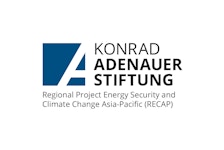The risks of climate change to cities and vulnerable communities are well-known. Now, companies increasingly recognise that climate change can affect their operations and financial assets too. Reporting the risks of climate change through corporate climate disclosures has grown in relevance and importance.
There are different types of climate-related risks. Broadly, these include physical risks such as the direct impact of flooding or hurricanes on assets, or transition risks which refer to the risks associated with the transition towards a low carbon economy. All need to be strategically considered by businesses and investors that want to be prepared for future climate scenarios. While the mainstreaming of climate risk disclosure adds another layer of requirement for companies, it is crucial to ensure that data is available for investors to integrate disclosure information into their decision-making.
In this explainer video, we explore the importance of climate risk disclosure for climate action, why climate change can result in the increase risk of stranded assets, as well as popular guidelines for disclosing climate risk. The video features Dr. Kim Schumacher, associate professor in sustainable finance and ESG at Kyushu University, Japan and Dennis Wan, regional lead on corporate engagement at CDP, the global non-profit that runs the disclosure system for investors, companies, cities and states.










